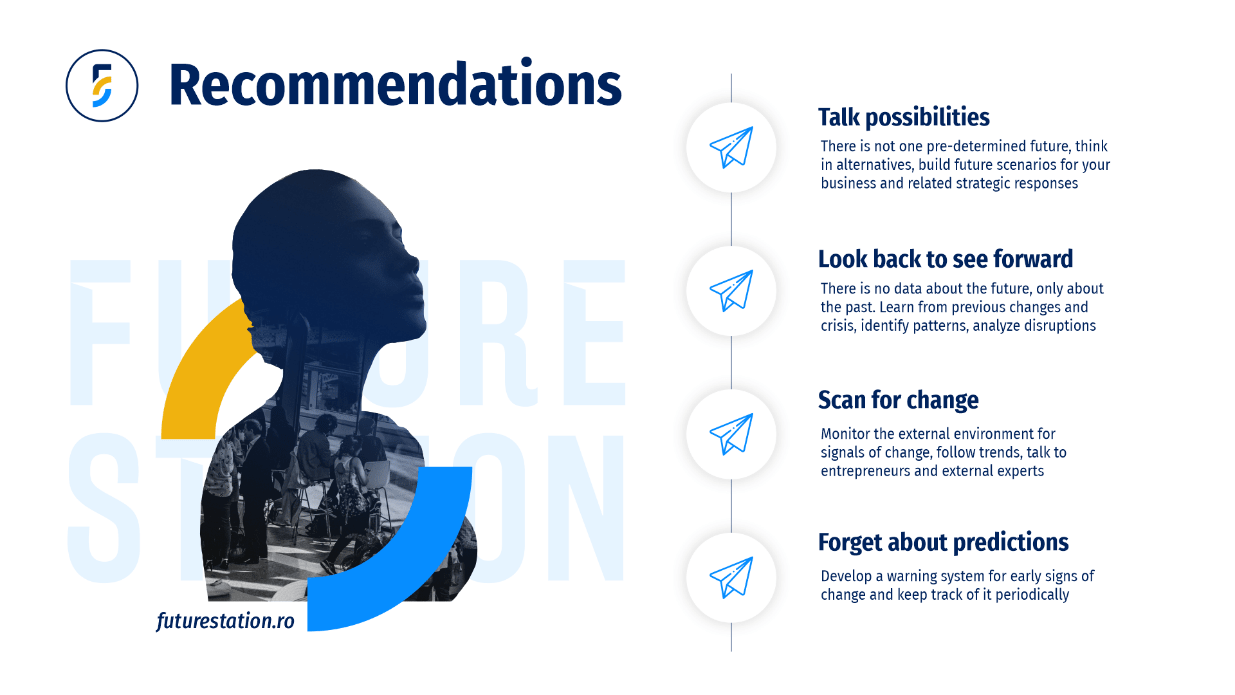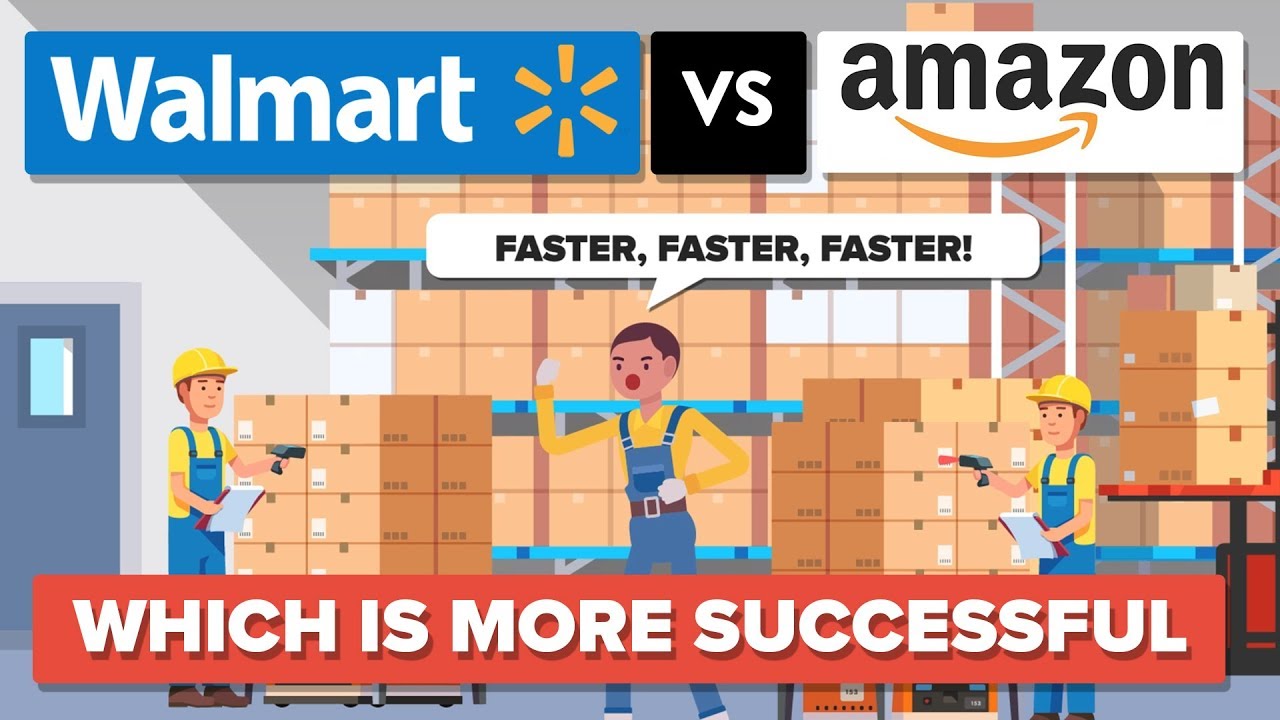Jeff Bezos is stepping down as Amazon CEO. What is his legacy?
In a letter published yesterday, Jeff Bezos announced he is stepping down as Amazon CEO later this year. Andy Jassy, Amazon’s head of cloud computing will be taking the helm.
Jeff Bezos founded the eCommerce retailer 27 years ago in a garage when it “was only an idea” and people were asking him “What’s the internet?”.
Leveraging the power of the internet and thanks to his vision on what makes a successful company, today Amazon is the world’s largest online retailer of consumer products and a leader in the cloud computing segment.
With a market value of 1.6 trillion dollars, Amazon is in the Top 5 big tech US companies and it doesn’t look like it’s going to slow down.
“Being the CEO of Amazon is a deep responsibility, and it’s consuming. When you have a responsibility like that, it’s hard to put attention on anything else”, he writes. In his new role as Executive Chair of the Amazon Board, Jeff Bezos will still watch closely over the company but will dedicate his time and energy to other Amazon initiatives such as the Day 1 Fund, the Bezos Earth Fund, Blue Origin, The Washington Post “and my other passions”.
As Jeff Bezos steps down as CEO of the world’s largest eCommerce retailer, let’s take a look at what he leaves behind, his legacy.
Jeff’s business strategy is his legacy.
Here are eight essential factors of Jeff’s successful business strategy for Amazon:
1. Move quickly to solidify and extend your current position
In 1997, with big tech companies like Microsoft and AOL expressing interest in online commerce, Bezos saw a window of opportunity.
“Our goal is to move quickly to solidify and extend our current position while we begin to pursue online commerce opportunities in other areas. We see substantial opportunity in the large markets we are targeting”, he writes in his 1997 shareholder letter. I remind you that, at the time, Amazon was still selling books.
2. Set out to delight your customers
Jeff believes complaining customers are a company’s most valuable resource for growth. They reveal blind spots that employees or managers could not otherwise identify giving the business the opportunity to improve and develop.
Amazon’s focus on customer obsession is one of its underlining factors for success.
3. Make bold investment decisions
At the heart of Amazon’s investments is the customer.
Every investment that Amazon makes is to further improve customer satisfaction and experience by developing systems, infrastructure and service.
4. Become aware of proxies
In his 2016 shareholder letter, Jeff talks about the danger of allowing proxies to gain power within the company.
Proxy is something or someone who acts as a substitute. This is when the process has become more important than the result and replaced it. It’s the process as a substitute for the outcome.
When someone in the company starts saying This is how we’ve always done it, it’s time for a change.
5. Your employees must think like an owner
Jeff acknowledged early on that hiring the right people was paramount if Amazon was to be successful and achieve its objectives. “Setting the bar high in our approach to hiring has been, and will continue to be, the single most important element of Amazon.com’s success.”
The retailer behemoth compensates its employees in Amazon stock than cash because becoming stockholders changes their mindset.
6. Embrace external trends
Businesses that adapt to the latest technological trends and customer behaviour changes evolve and survive. Businesses that resist change, don’t survive.
His advice to every company founder is to acknowledge powerful external trends like AI and machine learning and embrace them quickly.
7. Make high-quality decisions fast
Large organizations like Amazon have many things going for them with one downside: they are slow at making decisions.
Jeff didn’t allow this to happen to Amazon.
He created a system of making high-quality decisions fast which relies entirely on the Day 1 mindset. Day 1 companies are startups, nimble and agile, bursting with vitality. Day 2 companies are already heading for the end. Amazon is a Day 1 company.
8. Implement high standards
Amazon’s obsession with customer satisfaction has led to a number of outstanding product innovations (Alexa, AWS) and excellent customer experience (Amazon Go, 1-click purchases).
What does it take to achieve such results? Implementing high standards in the company.
At the core of Amazon’s supremacy is innovation. So it’s no surprise that Jeff Bezos ends his letter to the employees with an encouragement to continue down the path of innovation.
Keep inventing, and don’t despair when at first the idea looks crazy. Remember to wander. Let curiosity be your compass. It remains Day 1.
Jeff
Join the Conversation
We’d love to hear what you have to say.
Get in touch with us on our LinkedIn Page, Facebook Page, Twitter or TikTok.
What’s next for Retail?
Diana Stafie is Foresight Strategist & Founder of Future Station, a consultancy practise focused on strategy building by using foresight methodology and tools. Understanding “How the Future of… might look like” is the core mission. Diana designs and runs Future Scenarios and Trends Scanning projects, Trends lectures and future-related keynotes.
What does the future hold for retail after the Covid19 pandemic?
What new consumer needs have emerged?
What innovations are brands considering?
I have recently collaborated with Retail Expert Vlad Ardeleanu on a foresight project aimed at developing scenarios for a post Covid19 reality. And below we have summarized some of our conclusions regarding the retail context.

Retail Expert Vlad Ardeleanu
Learn about foresight and scenario planning.
Retail sales surge to pre-Covid19 levels – a cause for optimism?
Covid19 pandemic has fundamentally changed the global retail landscape. Shopper behaviour has evolved and adapted with unprecedented speed. Today, shoppers are more selective and discerning in how they shop and what they buy.
Reading consumer behaviour was never easy. Today, deciphering the consumer looks more difficult than ever.
Consumer confidence and sales trends are always good indicators to start learning about retail status-quo. It is a good place to start in understanding metrics about consumer behaviour.
With 2019 confidence levels at historic high, it was only natural that Covid19 would rapidly erode confidence and send the index to historic lows.
Nielsen’s Global Consumer Confidence Index fell from 107 to 92 in 2020. And retail sales follow confidence levels. US retail sales fell 9% in March and 16% in April versus last year. The EU had similar patterns, with retail trade down 8% in March and 18% in April.
When the outlook is all bleak and global expert consensus forecasted retail sales decrease of 10% in 2020, a surprise happened. Sales surged back with unprecedented strength.
US and EU sales jumped back 18% in May. More growth followed in June with 8% in the US and 5% in the EU. Retail spending in July topped pre-pandemic levels announced by both the US and EU.
Asian countries made similar announcements. After all the panic and close parallels with the Great Depression (or other crisis), having till now only three negative months in retail sales is unexpected great news. Can this be a cause for optimism?

Retail innovation landscape
Here are 4 examples of how retail brands have adopted already to the new landscape:
1. Voice-based e-commerce grocery shopping experience (June 2020)
France-based Carrefour and Google launched voice-controlled grocery shopping for the grocery chain’s e-commerce platform. After connecting their Google and Carrefour accounts, shoppers can add items to their shopping list using voice commands via Google Assistant on their smartphone or other devices. More details here.
2. Free telenutrition service to promote healthy and affordable eating (May 2020)
Kroger Health offers telemedicine consultations to help consumers make healthier dietary choices. The service was launched in response to tightened consumer budgets and reduced availability of fresh produce due to the coronavirus. More details here.
3. Contact-free shopping and collection
Selver, an Estonian supermarket chain, launched a robotic grocery locker service allowing customers to collect online orders without human contact. With two temperature zones, the robot can safely store fresh and frozen items, offering convenient curbside pick up in various locations. More details here.
4. Smart shopping cart for cashier-less shopping (July 2020)
Amazon unveiled Dash Cart: a smart shopping cart that allows shoppers to skip checkout lines. To use the Dash Cart, shoppers scan an on-screen QR code with the Amazon app to verify their account. The cart uses built-in cameras and scales to detect items placed inside. More details here.
Future of Retail: implications
Consumers expect Covid19 period to be limited. Despite the drop in reported consumer confidence, we trust that consumers expect this Covid19 period to be brief.
The possible availability of a vaccine early next year could mean a return to normality in the next six to ten months. One argument in favour of this idea is that some of the important share price indexes are already back to pre-pandemic levels.
However, consumer shopping behaviour will never go back. If for volume levels we already see recovery, we cannot say the same about consumer shopping behaviours. The crisis has prompted a surge of new activities, with a good percentage of consumers trying new shopping behaviour in response to economic pressures, store closings, and changing priorities. But which of these changes will stick?
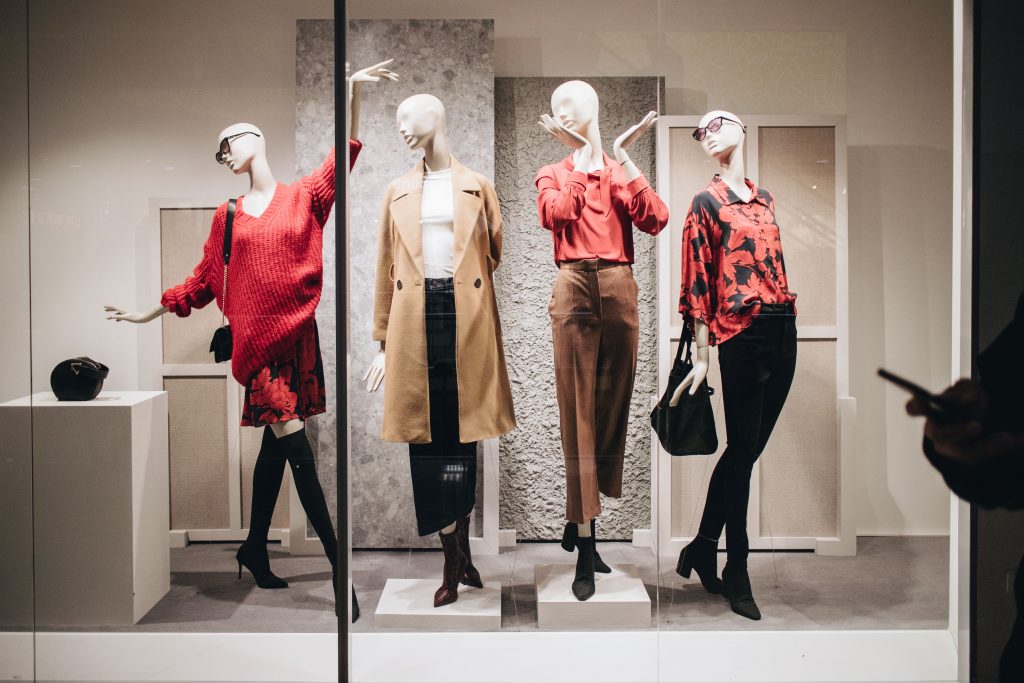
5 highly important changes we believe brands should consider
1. Low touch retail is here to stay
The low touch economy refers to the newly imposed restrictions and constraints that will dictate the direction of retail. As coined by the Board of Innovation, the idea of “low touch economy” pinpoints the drastic change in the way businesses will see more reliance on automation or robots to overtake repetitive tasks, regular cleaning in storefronts, and having employees work remotely.
2. E-commerce in the spotlight
While the shift to online shopping has been near-universal across categories, high-income earners and millennials are leading the way in shifting spend online across both essential and non-essential items.
A McKinsey study published in August 2020 found that consumers significantly intend to shop online even after the Covid19 crisis. There is a 10% average growth in customers purchasing online in each and every category.
Digital shopping is definitely here to stay, with categories such as over-the-counter medicine, groceries, household supplies and personal-care products to grow the fastest.
3. Affordability seekers
Some of the current changes in consumer behaviour will largely mirror the changes that manifested during the 2008 recession, yet on a shorter time-frame and with greater speed.
Most consumers today worry about the state of the economy, how long this crisis will last and overall health concerns. Population savings are growing everywhere in the world since consumers are increasingly looking for value and affordability in their spending.
4. Data-driven retail
Mastering data enables you to understand and manage operational activities, such as customer pickup options, customer profiles and product preferences.
Understanding each of these characteristics allows you to develop a 360-degree view of your customer — and better meet their needs. A great example here is the approach of UK-based retailer Sainsbury’s. Using data and analytics Sainsbury’s has designed its new locations in order to match the needs of busy city workers (more details here).
5. Brand loyalties are disrupted
Product availability has been top of mind for consumers as food manufacturers adjust to meet surging retail demand during early days of the COVID-19 pandemic. Empty shelves and temporary stock-outs have disrupted brand loyalty and generated increased trials of both national branded and private label grocery items.
Price sensitivity has also been a factor. Consumers have been more willing to try new private label brands than national brands. Shopping behaviour favouring convenience and proximity was another factor for brand loyalty.
A surprising upturn for the smaller convenience stores was registered, despite difficult sales in Q2 2020. This was first spotted in Asian markets and went on to become a world trend as reported by a recent Nielsen survey.
In light of economic uncertainty, consumers will continue shopping closer to home for a more diverse assortment of products and categories.
Recommendations
It’s time to face the facts, do not underestimate the uncertainty and prepare for the future:
- Talk possibilities
- Look back to see forward
- Scan for change
- Forget about predictions
Join the Conversation
We’d love to hear what you have to say.
Get in touch with us on our LinkedIn Group, Facebook Group or Twitter.
Ionut Vlad (founder Tokinomo): A founder needs to become better at almost everything
Ionut Vlad is the founder & CEO of Tokinomo, an innovative solution for retail marketing.
Tokinomo is the answer to one of the problems brands have in retail space – which is neither branding nor packaging, it’s visibility. The company developed an in-store shopping engagement which helps retailers increase sales with an average of 200% (scroll down to see the tool in action).

Ionut Vlad, founder & CEO Tokinomo
Ionut is intuitive, smart and creative and set out to make his own contribution to a better world. I caught up with him before flying to a retail trade show and asked him a few questions.
Read on to find how he switched direction from employee to tech startup founder, three challenges his team had to overcome to develop his retail solution, his point of view regarding whether or not retail is dead and what skills he believes a successful startup founder should acquire or develop.
[bctt tweet=”Ionut Vlad, founder @Tokinomo: Initially, nobody believed us when we said we could increase their sales by over 200% although we had hard facts to prove it. #worldchanger” username=”brand_minds”]
1. You are a fine arts graduate and have been the art director for a global advertising company. In 2016 you decided to develop Tokinomo, an innovative solution for retail marketing. What made you switch direction from employee to tech startup founder?
During the time I’ve worked in advertising, I realised that FMCG brands needed a better way to engage and communicate with the shoppers in-store. That was the reason I’ve come up with the idea.
In the same time, I guess I was always looking to do something on my own, to create something unique as opposed to being just a well-paid employee forever. I believe I have an entrepreneurial spirit which runs a bit on my male side of the family as well. My father and uncle also had this spirit, and I think it got to me somehow.
2. Name three challenges that your team had to overcome while developing Tokinomo.
Only three? 🙂
First was the founder’s lack of technical background. Especially in electronics. We had to rally a strong team behind us to compensate and make it happen. Creating a dream team is always hard. Michael Jordans are hard to come by.
Second – novelty. Although bringing something new to the market seems like a significant advantage, from another point of view it is harder. Decision-makers are more too often reluctant to embrace new technologies, and they would instead adopt a follower attitude. We needed visionaries and daring individuals willing to challenge the status quo. Initially, nobody believed us when we said we could increase their sales by over 200% although we had hard facts to prove it.
Last, but not least – lack of deep insights from the retail industry. It is a pretty secretive closed caste kind of industry. It took us a while to realise the intricacies of their world, and we still have a lot to learn.
3. Tokinomo is currently available in Morocco, Italy, Switzerland, Mexico and the United Arab Emirates. What’s next?
Actually, meanwhile, we are also in Saudi Arabia, Greece, Czech Republic and Ukraine 😀
We will continue to expand our distribution network across the globe, and we sign about 2-3 new distribution contracts per month.
Once we get our footprint in most territories we are interested in, we will be able to implement our solution at a higher scale partnering with the biggest global brands and retailers. Since many of my colleagues think I’m a dictator, I have no choice but acting like one and my plans for conquering the world are very much in place. After that, Mars is next :).
In parallel, we are working on new solutions to solve other relevant problems in the retail scene and add-ons to the current device. We have a few exciting new features coming along this year.
4. Many say retail is dead. What are your thoughts on the subject?
There’s a little joke I read somewhere: Nietzsche said “God is dead” and I don’t know about God, but Nietzsche is certainly dead 🙂
In some form or the other retail is far from dead. Even brick & mortar retail is very much alive, still holding around 90% of the total sales.
Of course, it currently reinvents itself, it becomes more omnichannel, it needs to embrace more new technologies and like in every story and every industry there are winners and losers. So my answer is losers will die, and winners will thrive. The ones who will be quick in adopting new technologies and solutions (especially Tokinomo of course) will do quite well.
5. What skills do you believe a successful startup founder should acquire or further develop?
It’s a difficult one. A founder needs to become better at almost everything. He is forced to change himself. He needs to become a leader, to have patience, wisdom, to be realistic, daring. If I picked one skill, I would say he needs to be courageous. Surprisingly, like the lion in the Wizard of Oz, it’s something that you can develop along the way. At least this is what I feel is right in my case.
Join the Conversation
We’d love to hear what you have to say.
Get in touch with us on our LinkedIn Group, Facebook Group or Twitter.
Metail® – The Virtual Fitting Room
In the early 2000s, with the advent of online commerce, many high street fashion shops have taken a serious blow and closed their doors. The brands that were quick to perform a change in direction and moved their presence online with e-commerce shops managed to maintain brand awareness and keep their foothold on the market.
Today having an online shop is not enough. To increase sales and attract new customers, it’s good to offer discounts and other incentives but so do most fashion brands. What do you do to stand out among your competitors?
![]()
Learn more: Grow Your Business with These 6 Tech-Powered Trends
![]()
Well, a good place to start is to know your customers’ pain points. Women love to spend time shopping, it’s one of our hobbies. But shopping has the following drawback: we get tired of spending hours on end in the shop changing room. We also love shopping online, but how can we make sure the clothes fit us right if we cannot try them on?
Is your brand looking to solve this problem?
Metail® provides you with an innovative solution.
Metail® – A Virtual Fitting Room

Metail® is a virtual fitting room service for fashion retailers. It allows your customers to create a 3D photo-realistic model of themselves from just two uploaded photos, in only a few minutes.
Once the 3d model is ready, they can then try on clothes, see how they fit and create and share their looks.
Once a customer has made their model, they can login to their Metail® profile with any partner retailer using the service.
It’s all about enhanced online shopping experience through technology.
Metail® is powered by its own recommendation engine based on a machine learning algorithm and 3D visualisation technology.
The company was started in 2008 by CEO and Founder Tom Adeyoola who wanted to help his girlfriend find well-fitting clothes she liked without spending hours in the shop’s changing rooms.
Since then, Metail® raised $32.4M in funding, filed patents with 9 granted and 22 pending and built a highly skilled team dedicated to solving the problem of finding the right fit when shopping online.
Metail® aims to become the global body shape and visualisation experts.
What problems fashion retail customers have that the company addresses through its platform?
Metail® addresses the following customer problems:
- Every body is unique, so finding the perfect fit can be challenging;
- Inconsistent clothing sizes;
- Complicated sizing charts;
- High returns and unhappy consumers.
Benefits for fashion retail customers:
- Shoppers receive personalised size advice and style recommendations;
- Increased brand trust and brand awareness;
- It can change the way people view body image and clothing;
- Empowers users to dress for their own personal shape rather than for the projection of the ‘ideal’ form;
- Offers an enhanced online experience your customers will love;
- Limit waste;
- Save time and money.

Benefits for your retail fashion brand:
- Up to 22% uplift in sales;
- Increased engagement and adoption rates of up to 76%;
- Expand your knowledge about your shoppers with tech-driven insights;
- Customers spend up to 5x longer time on the site;
- Manage inventory efficiently;
- Streamline your supply chain;
- Deliver a seamless online experience on the web, mobile and tablet;
- Continuously learning from new data every day (7.2 billion data points – and counting).
Awards and recognitions:
- Shortlisted for BAFTA Television Craft Award | Digital Creativity in 2014 for ‘Take Over the Makeover’;
- Shortlisted for BT Retail Week Technology Award 2014 and 2015;
- Wins 2014 Decoded Hackathon for creating ‘Loop’ app;
- Wins the 2015 IBM Commerce Ecosystem Technology Innovator of the Year at IBM Amplify;
- Wins 2015 Digital Coalition of the Year with House of Holland at the inaugural Decoded Fashion Futures Awards;
- In 2017 it is accepted in the Microsoft Accelerator program, a global initiative empowering entrepreneurs around the world. The company was awarded US$500,000 worth in Azure Cloud credits;
- Wins a 2017 Techie award for Retail & Innovator of the Year;
- One of the honorees of the Maserati 100 list as an industry disruptor;
- In 2018, Metail’s CEO, Tom Adeyoola was named amongst “Ones to Watch” in Top 50 Most Ambitious Business Leaders, supported by The Telegraph.
Join the Conversation
We’d love to hear what you have to say.
Get in touch with us on Facebook Group and Twitter.
3 Retail Brands Eliminating Checkout Lines
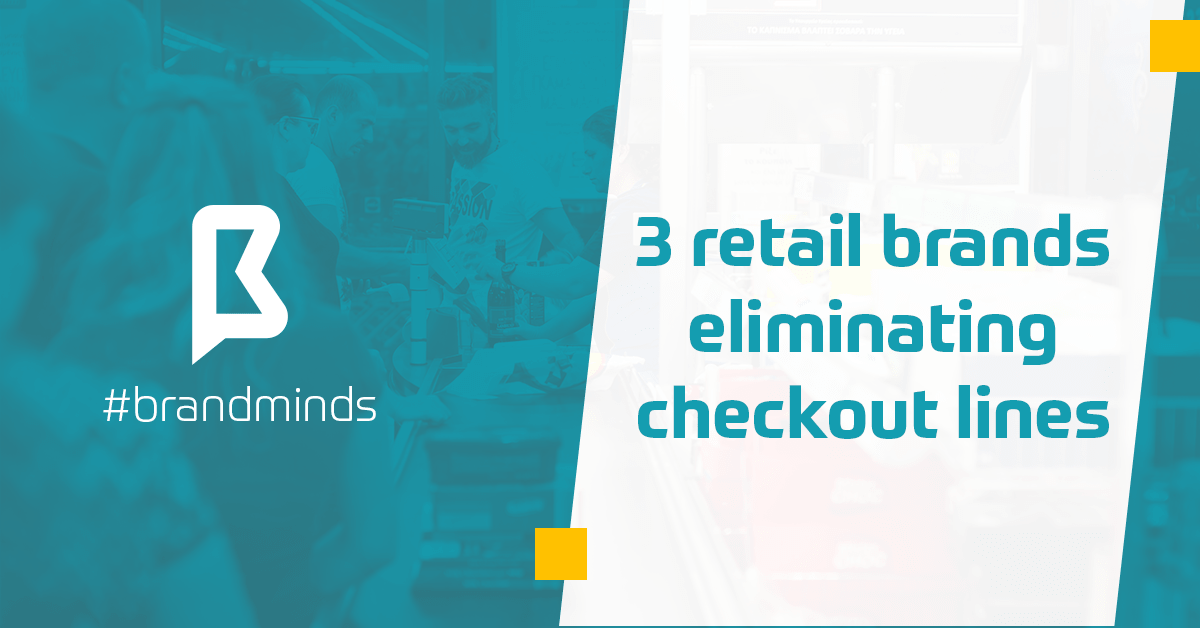
Shopping is the exchange of goods for money. The definition is straightforward, but fails to encompass the various meanings it has for different people. “Going shopping” strikes terror in the hearts of men when spoken by their wives or girlfriends. When spoken by women, it means pleasure, therapy, hobby or sport. When spoken by teenage girls it adds an extra layer of being a social activity and a form of entertainment.
Whatever shopping means to you, everyone has this in common: we all hate waiting in long lines to checkout!
Retail brands are looking for new ways to improve customer experience in-store. According to 451 Research, 86 percent of US consumers said they left a store due to long lines, resulting in a purchase at a different retailer or no purchase at all. This behaviour has lead to approximately $37.7 billion lost in potential sales. So it’s understandable why a frictionless checkout by eliminating cashiers altogether is one of the short-term objectives of retail brands.
You may think this objective is in the not-so-distant future, but you would be wrong. Some retail brands are already living in the future.
Here are 3 retail brands implementing cashierless checkout today.
1. Amazon Go – Just Walk Out
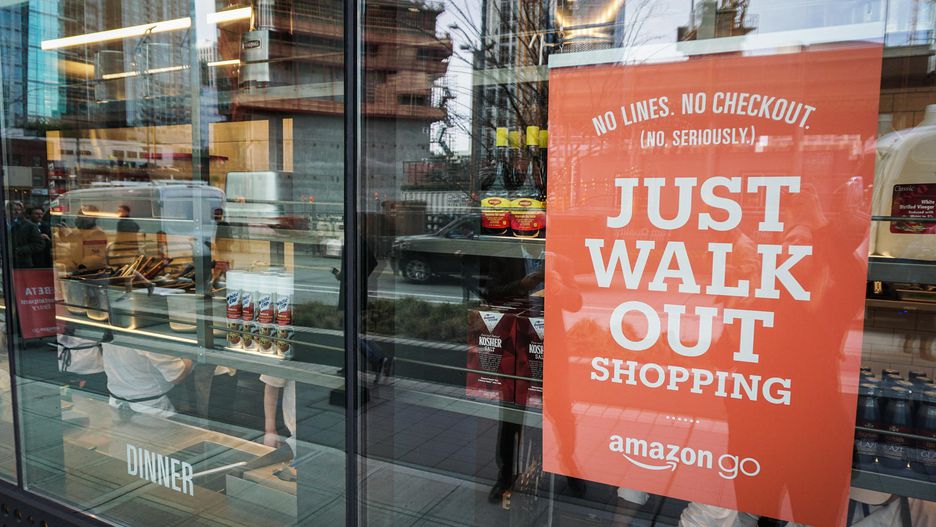
image source: cnet.com
Amazon Go opened in January 2018 its automated in-store system – Just Walk Out.
The system relies on technologies such as computer vision, sensor fusion and deep learning to ensure a streamlined shopping experience. There are no cashiers or checkout lines. The system determines what a customer has picked up before making the appropriate charges to their Amazon account when they leave the store (info source).
2. Saturn Express – Europe’s first checkout-free consumer electronics store
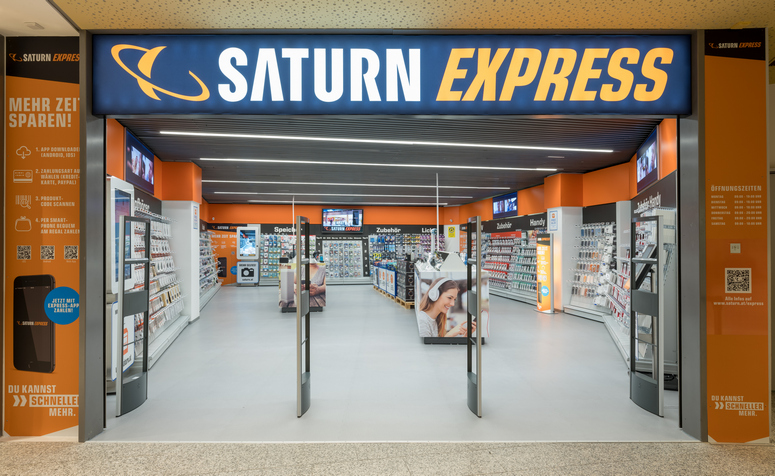
image source: across-magazine.com
Saturn Express is the first European brand to open a checkout-free consumer electronics store this spring.
The store combines a digital shopping experience with sound advice. Customers can seek sales assistance in the traditional manner and pay for items using an app. The app was specially developed for Saturn and allows customers to scan the barcode of the items they want to buy and pay for them by credit card or PayPal. And that’s it! No waiting in line at the checkout (info source).
3. Inokyo – Retail startup
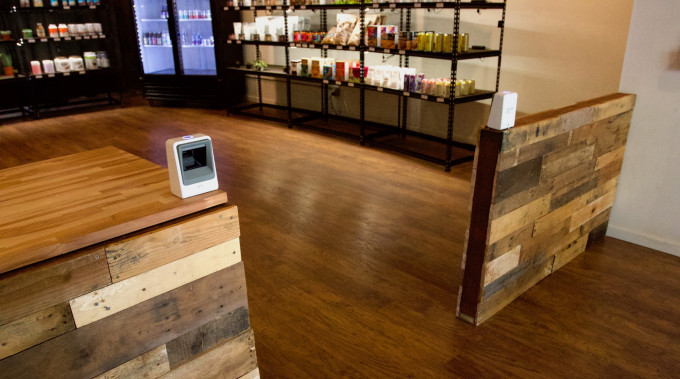
image source: techcrunch.com
Inokyo is an autonomous retail startup and just launched its prototype cashierless autonomous retail store.
Here’s how the Inokyo store works. Customers download Inokyo’s app, connect a payment method and get a QR code. Upon walking into the shop, they wave the QR code in front of a little sensor. Overhead cameras scan the body shape and clothing without facial recognition in order to track customers as they move around the store. Meanwhile, on-shelf cameras track when products are picked up or put back. Combined, knowing who’s where and what’s grabbed, lets it assign the items to the shopping cart. Customers scan again on their way out, and later they get a receipt detailing the charges (info source).
What is the retail trend of 2018-2019?
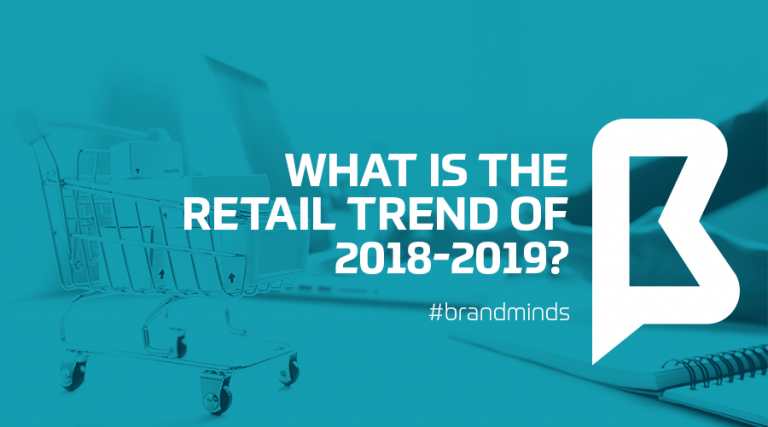
What comes after E-commerce and M-commerce?
How is the consumers’ retail behaviour changing?
Here is what lies ahead for retail commerce – A-Commerce.
The “a” in a-commerce stands for Automated.
Automated commerce is the latest trend identified by TrendWatching in consumer retail behaviour.
What is Automated Commerce?
AI and machine learning technology have been changing our lives and our society for the past few years.
From voice-activated personal assistants like Siri which gives us directions and sends emails on our behalf to Google’s Duplex which takes it one step further and actually talks over the phone to book hair salon appointments or restaurant reservation, digital assistants set out to make our lives easier.
AI has brought change to various domains such as car making, customer experience, education and healthcare, and even influence our emotional well being by becoming our digital companion (Read about Replika, your digital companion).
A-commerce is the result of AI and automation having a powerful impact on consumer behaviour.
Why is A-commerce a trend?
A-commerce is a trend
because in 2018, shoppers with more important things to do – and that’s all of them – will embrace the outsourcing of certain retail experiences to algorithms and smart devices. That means the automation of hunting, negotiating, purchasing, delivery arrangements and more.” (TrendWatching)
Here are 3 illustrations of A-commerce:
Finery
Do you enjoy organising your wardrobe?
Don’t feel bad, no one does, unless you’re Sheldon of the Big Bang Theory.
Do you constantly ask yourself in the morning What should I wear?! looking helpless at the pile of clothes on your bed?
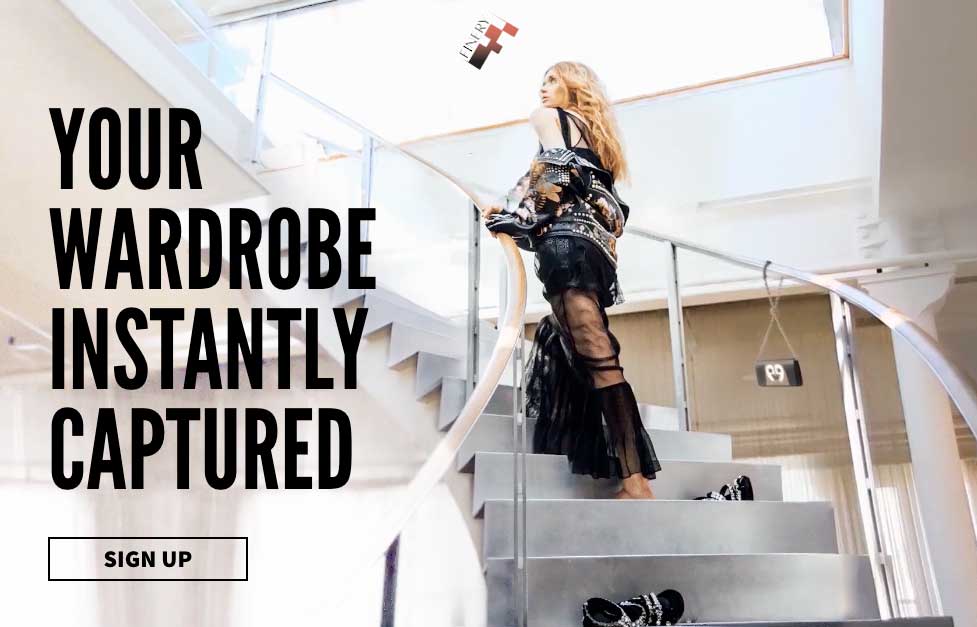
image source: finery.com
Finery allows women to outsource much of their fashion retail making it the perfect solution for every woman’s wardrobe related problems.
This is what Finery does:
- helps you catalog your wardrobe and rediscover clothes you haven’t worn in years
- brings your closets online and help you pick and style your outfit for the day
- helps you track and style your clothes
- lets you know when something you want to buy goes on sale
- styles every item for maximum usage
- connects your email, accesses your shopping receipts and helps you build out your wardrobe
WeSwap
Do you need to go on holiday or take a short trip abroad?
WeSwap takes care of your travel money.

image source: metro.co.uk
What is WeSwap?
WeSwap is the world’s first peer-to-peer travel money platform.
Instead of going to banks or exchange bureaus for currency exchange, WeSwap allows users to swap currency with other travellers.
Here are the main benefits of using WeSwap:
- it helps travellers round the world get a better deal on their travel money
- it helps users avoid losing money in foreign ATM transaction fees
- based on the platform’s insights, the app offers guides on how much money travellers can spend in various cities around the world
WeSwap was voted the Best Travel Money Provider in 2018 British Bank Awards by UK consumers.
Amazon’s recommendation engine
The latest statistics say that 92% of consumers trust recommendations from people they know.
If consumers buy products and services based on what their friends and family recommend them, why wouldn’t they buy following recommendations from an A.I.-powered engine which is objective and data-based?
The numbers that Amazon report hold this hypothesis to be true:
- sales increase of 29%, from $9.9 billion to $12.83 billion
- 35% of Amazon.com’s revenue is generated by its recommendation engine, both on-site and off-site
Product recommendation based on algorithm helps Amazon harness the power of personalized marketing and it is a real success!
Online versus offline retail war ending soon?
“2018 will mark death of online versus offline retail war”, said Mariam Asmar, McCann London’s strategy and innovation director, for Campaign UK.
What is for certain is that both worlds willcontinue for sure to exists for a good while. In a demanding night and day economy, consumers want access to shopping at all times. They want to use price comparison sites, they want infinite choice in styles and sizes and they want to do it all from the comfort of their own home without the pressure of three different sales assistants hanging around waiting to bag some commission.
At the same time, “physical brick and mortar stores will continue to have a place in a world that still requires, and desires, human connection. The current statistic is that 90% of purchases in the UK are still made in store, while 60% of Generation Z consumers value the store experience. Millennials even want to shop in places they can touch, feel and see their product. Not to mention for some, shopping is an experience and they appreciate input and care from the staff and in store experiences,” wrote liveandbreathe.com.
Last year, in the USA, according to “The Atlantic”, online shopping was having an offline moment, as more e-commerce companies, such as RentTheRunway and Bonobos, invested in the physical stores they once made seem obsolete. Leading the trend is Amazon, the undisputed king of online shopping, which spent $14 billion to buy Whole Foods and its nearly 500 physical locations. “According to internal documents, the company believes there is support for another 2,000 Amazon Fresh–branded grocery stores. This throwback revolution is happening in the midst of what otherwise feels like a “retail apocalypse.” Bankruptcies are rising among clothing chains, like Wet Seal, and retail icons, like Toys “R” Us, which are stuck with a glut of shopping space and squeezed between stagnating sales and large debt obligations,” wrote “The Atlantic”.
While Amazon did make a bigger splash with its $13.7 billion investment, Walmart beefed up an e-commerce stable that already includes the acquisitions of digital natives Jet.com, Shoebuy, ModCloth and Moosejaw. Collectively, these M&A deals have set Amazon, the world’s largest e-commerce company, on a direct collision with Walmart, the world’s largest retailer, to be the “everything store” in an omni-channel world — where consumers no longer distinguish between shopping online and offline.
In the future, Amazon could upgrade Whole Foods with innovative retail technologies in use at its fully automated experimental store, Amazon Go, where shoppers pick up their food and leave. There are no cashiers or checkout lines. Amazon tracks what’s taken, or put back, and charges their accounts.
Moreover, “several brick-and-mortar companies with large footprints are struggling while e-commerce companies that once launched pop-ups as mere marketing tools have realized the value of storefronts,”considers The Atlantic. For instance Amazon sees a growth in online shopping in regions where it’s opened a physical store, according to CNBC. “Five years from now, we won’t be debating whether ‘e-tailers’ are taking share from ‘brick & mortar retailers,’” Citi Research analysts recently wrote, “because they are all the same.” The trend even comes with an inevitable, and regrettable, catchphrase: “bricks and clicks.”
“Among the nation’s top 300 malls, brick-and-mortar space occupied by retailers that started online has grown by approximately 1,000 percent since 2012, according to the real-estate data company CoStar Group. While they currently account for a minuscule part of mall volume, landlords increasingly consider them critical to attracting Millennials to these malls in the first place,” adds “The Atlantic”.
In India, another big and important country, according to blog.markgrowth.com, “the FMCG is vertical: 90% of sales happen via mom and pop stores (Kirana) which are plenty in number. The remaining 10% of sales is accounted for by Modern Trade outlets ( Large Retail format stores similar to Walmart ) and the online channel. Now, these mom and pop stores are not going to go anywhere ( Over 10 million outlets in every nook and corner of the country!). Technology will aid these stores in the near future which will arm retailers with data regarding consumption patterns for instance, which will prevent stock-outs leading to an enhanced experience on the whole.”
More about the e-commerce in India and the classic retail industry one can read here and here.
Meanwhile, in China, according to www.scmp.com, malls are starting their own digital stores as they hitch their bandwagon to the concept of “new retail” pioneered by the Alibaba Holding Group chairman, Jack Ma Yun. The “online-offline integrated experience” is increasingly being used by Chinese retail property operators, who see it as a critical way of gaining insight into consumers’ shopping patterns and responding to these quickly.
